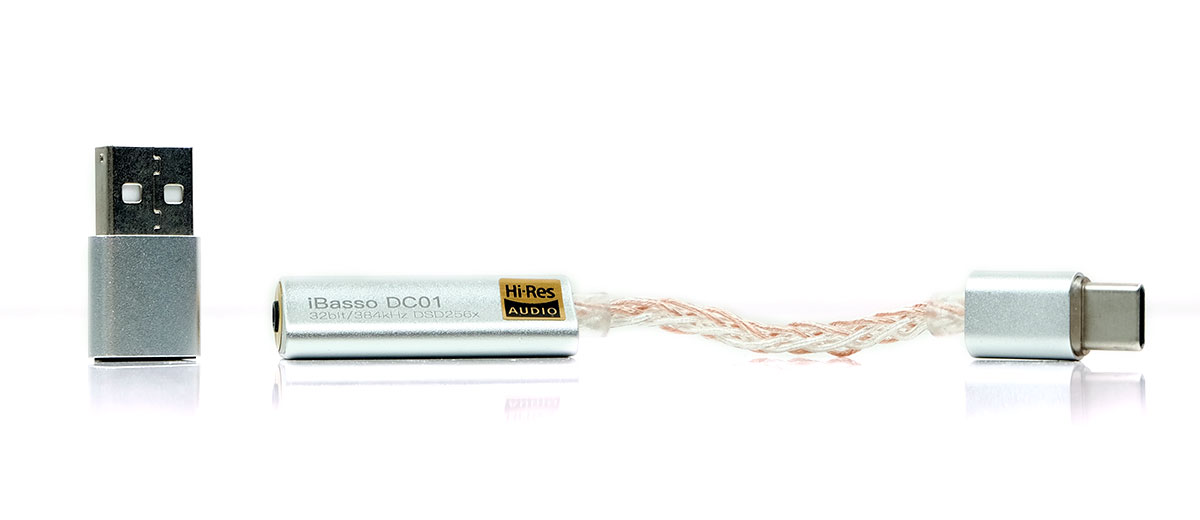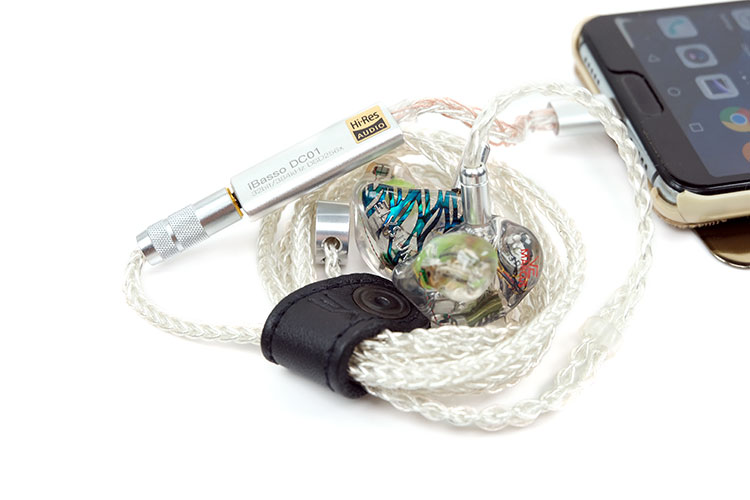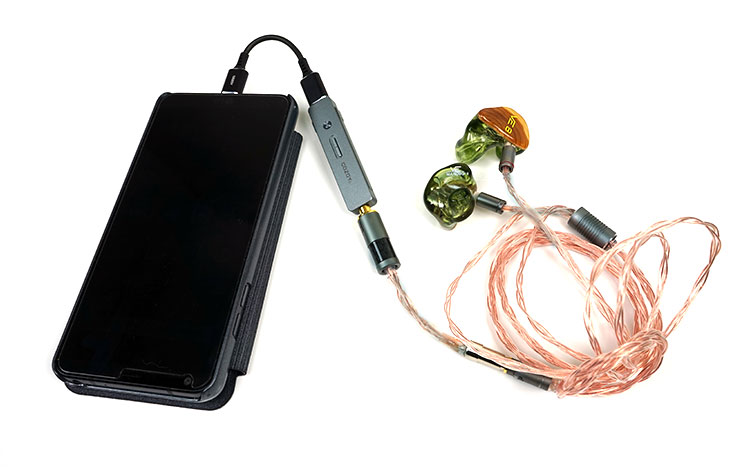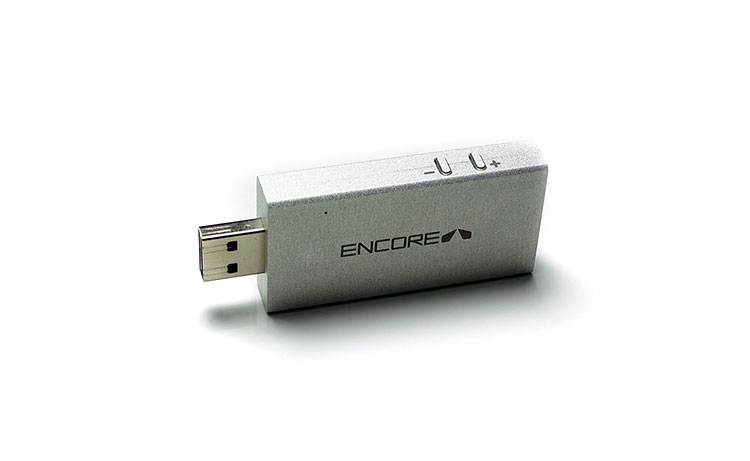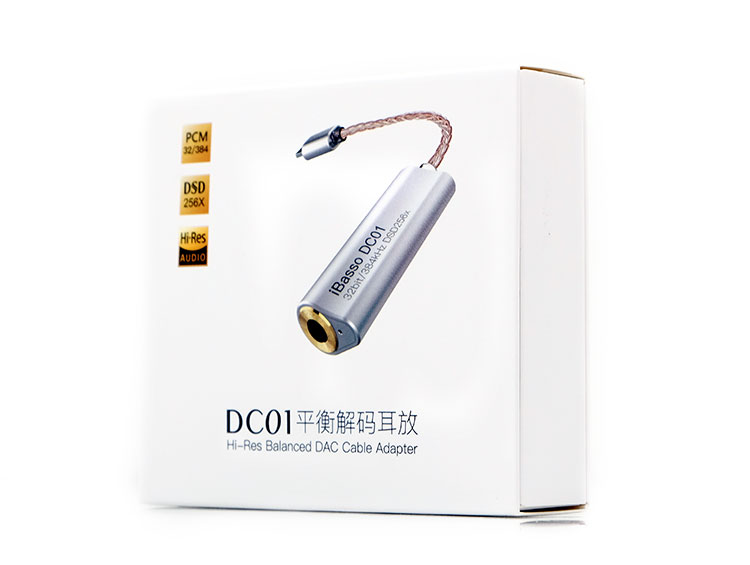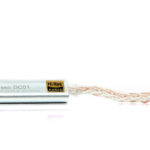Synergy
Noise
This is the Achilles heel of the DC01 but it should only affect fairly sensitive monitors. For instance, the high SPL Solaris and Andromeda will show up background hiss but the lower 97dB SPL rated CA Comet is far quieter with a fairly black background.
The FiiO FH5 is relatively lower in noise than the Solaris and Andromeda but not a completely black background and it is about 112dB SPL so right on the line for me.
Once you go up the impedance and drop the SPL level then the hiss starts to drop. The FIBAE range from Custom Art is also very quiet, in particular, the FIBAE 7 we recently tested has a pitch-black background with the DC01.
If you are on a tight budget then the 64Ω VE Monks+ with balanced 2.5mm TRRS terminations will have zero issues with noise using the DC01.
If you are using iBasso’s own monitors, the IT03 and IT04 then the DC01 pairing is relatively quiet but not pitch-black. You get some minor non-pervasive hiss on them both but at roughly the same level as the FH5 or slightly lower.
Power
At 113mW into a 32Ω load, the DC01 really should not have too many issues driving most IEMs and portable headphones. I wouldn’t pair these with harder-to-drive planar headphones and do bear in mind not many headphones come with a 2.5mm TRRS terminations out of the box.
I did try one headphone, the Ultrasone Edition 11 for a couple of reasons. The first is because we can slip on a good quality 2.5mm TRRS 2-pin IEM cable due to its 2-pin connector system. And second, because it is a 32Ω rated headphone, albeit a 94dB SPL.
That SPL was not an issue for Edition 11. Combining the core P20 volume control with the iBasso UAC app 63-step volume adjuster we rarely had to go above 60% (with the UAC at full volume) on the P20.
Without the UAC we were pushing about 80-90% on the P20 volume control to get to an adequate listening level. Put another way, this headphone goes as far as 90 (volume) using balanced low gain on the 500mW Lotoo PAW Gold Touch.
Select Comparisons
Cozoy TAKT Pro
$289
Technical
We never did a full review of the TAKT Pro but we have been using it extensively in some testing and it was my stick of choice at CanJam in March for testing from my P20.
This is a small detachable dongle with an ES9018Q2C chipset and around 70mW (1.5Vrms) of power in a 32Ω load. It is also an unbalanced amp stage design so the 1.5Vrms rating is on the same level as the DC02 from iBasso but lower in output power compared to the DC01.
The TAKT Pro comes with a few cables to allow it to work from an iOS device, Android (micro-USB only), and USB-A for USB-DAC from a computer. If you need USB-C you will have to buy a small adapter but it will work fine. Like the DC01 it draws power from your connected sources such as your computer or phone.
The TAKT Pro does not use any UAC2.0 type app but rather adheres to your phone’s SRC software implementation. It will work off ASIO drivers for Windows and is universal driver plug-and-play compatible for both MAC and the latest Windows 10 OS.
The TAKT Pro also has some useful physical button features, unlike the DC01 with an onboard volume rocker and a playback control button.
Performance
The volume control on the TAKT Pro is total SRC and as such too aggressive and crude for fine controls. It is either loud or not loud enough with no in-between with the P20. Perhaps other phones have a better level of control with the TAKT Pro but certainly, it could do with a UAC2.0 app.
Its noise floor is much lower than the DC01 but for $280 I would be expecting that at the very least. I am impressed however by the pitch-black background of the TAKT Pro with the Solaris and Andromeda.
The IT04 also has zero noise or just about any monitor that matters will not show up hiss on the TAKT Pro whereas the DC01 results are mixed.
The TAKT Pro is more of a traditional Sabre ES sound with a clean, neutral timbre with a slight treble emphasis. Yes, it has a slight Sabre glare in the lower treble with a bit more odd harmonic bias and a slightly drier sound than the DC01 tone.
You will hear a slightly hard percussion attack and a bit of vocal sibilance but nothing heavy-duty or off-putting from the TAKT Pro.
I have to say that despite the DC01 having an agreeable timbre, the TAKT Pro has the better dynamic range and instrumental separation of the two dongles.
You do not really notice that until you throw on harder-hitting tracks such as Grime’s “Butterfly” where the bass definition and texture comes through very well on the TAKT Pro.
Sonic Unity Encore mDSD
$99
Technical
We reviewed the mDSD in early 2016 and back then at $99 this seemed a bargain dongle with 32-bit/384kHz PCM and native DSD256 capability as well as a maximum output of 2Vrms or 125mW into a 32Ω load.
Certainly, it is the equal of the DC01 in terms of decoding capability and the slightly more powerful of the two in terms of Vrms though the spec page has a much lowering mW rating of 40mW.
It is possible the 40mW is on a higher load or weighting than 32Ω. The mDSD uses a slightly lower-end ES9010Q2M DAC compared to the Cozoy but is just as capable as both the TAKT Pro and DC01 for decoding.
Like the DC01 it will work as an OTG dongle and a USB-DAC though the connection system is a bit different. The mDSD is terminated with a USB-A male socket so it works without a cable directly into a computer, however, for OTG and iOS, you do need to buy an OTG female USB-A cable and a CCK for iOS connections.
Just something worth mentioning on the device size. This is much bigger and heavier than the DC01. It is also very wide and can block other USB ports if they are very close together.
The mDSD only has a 3.5mm TRS output and nothing balanced, however, its 3.5mm TRS jack doubles as a very handy 3.5mm optical output for connecting to SPDIF-capable DAC/Amps.
It is possible the mDSD has a UAC2.0 63-step control interface via its independent physical volume controls that do not affect the phone side volume setting.
Performance
The mDSD does display a high noise floor and some background hiss but using the CA Solaris and Andromeda it does seem the mDSD noise floor is not as high or as pervasive as the DC01. Both demonstrate roughly the same level of noise and very low levels of hiss from iBasso’s less sensitive IT04 hybrid monitor.
The mDSD doesn’t quite have the same level of air as the DC01 but it has a slightly weightier instrumental tone. For me, the mDSD has a more analog-sounding midrange which works well with a lot of rock vocals both male and female.
The DC01 has a slight lower-mids dip and a more forward vocal positioning which is very clear when you A/B them using the Huawei P20 as the source phone.
The mDSD has a slightly fuller low-end and a bit more lower-mids presence which probably adds to that analog-sounding midrange. The DC01 timbre is a little lighter and sweeter in tone whereas the mDSD is drier with slightly less headroom but a bit more treble body.
Our Verdict
I honestly have no complaints with this $50 dongle. It does pretty much everything you need it to do including 32BIT/384kHz and DSD256 decoding, balanced TRRS 2.5mm output, and a more than decent DAC chipset inside. Certainly, it blows away my stock dongle and P20 sound for not too many additional greens.
I do have to balance it with its fairly high noise floor with super sensitive IEMs. This may not be the dongle for you if you want to pair a Solaris with it.
However, iBasso’s IT04 and IT03 have significantly lower hiss detection and the addition of a UAC2.0 63-step volume control app does give it a degree of complexity and refinement that is hard to beat at $50.
I will be keen to see if the DC01 (and DC02) is part of a growing line of more sophisticated offerings. My older dongles are still competitive but it is not until you hit the $280 TAKT Pro do you get a really pitch-black background and higher dynamic range output. That’s a big gap from $50 that iBasso could well fill in with higher-spec options.
For now, buy a few of these for Xmas gifts or something. Everyone has a phone these days and plenty are Android. Introduce them to a good quality sound from their jack-free smartphone if you can. It won’t break the bank.
iBasso DC01 Specifications
- DAC chipset: AK4493
- THD+N: <0.001%(32ohm load, 1.2Vrms)
- Output voltage: 1.9V(32ohm load)
- Output power: 113mW@32ohm
- Frequency response: 20Hz-40kHz±5dB
- PCM: up to 32bit/384kHz
- DSD: Native DSD up to 256x
- Weight: 11g
- Length:120mm

